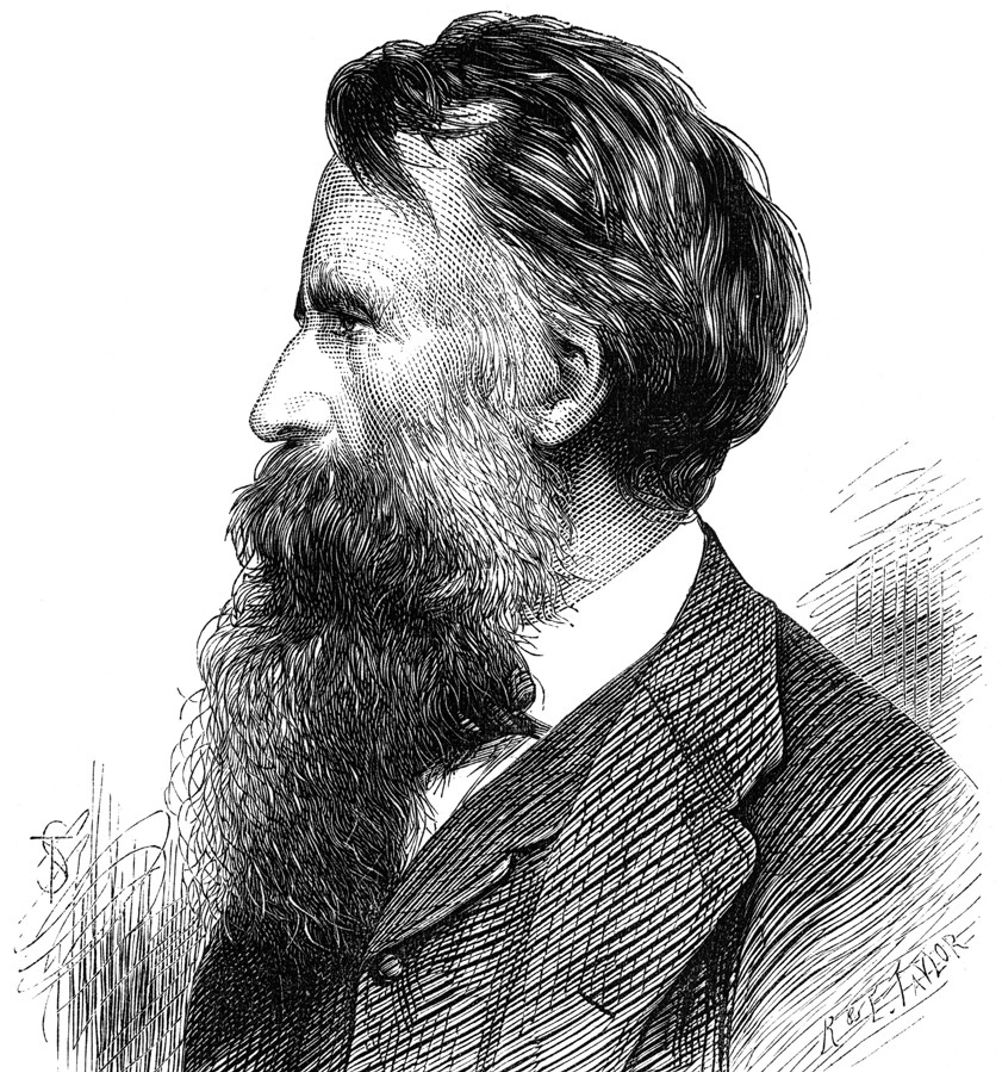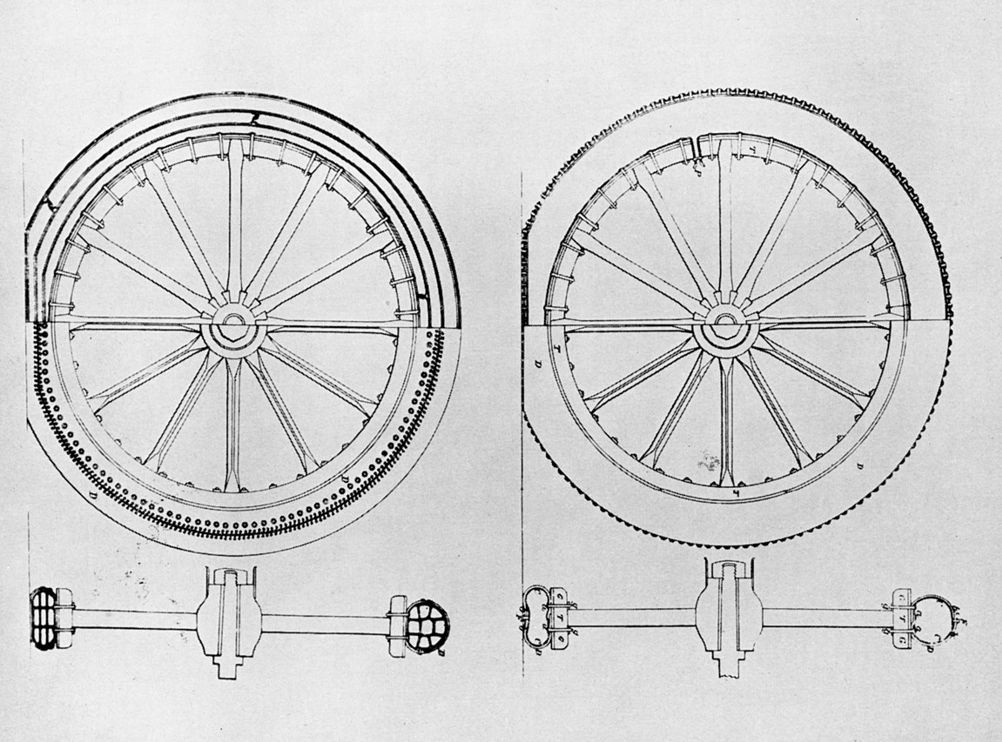
On 29th March 1873 the Illustrated London News published a brief obituary of ‘the late Mr R. W. Thomson, C.E., of Edinburgh.’ Perhaps it was a sign of more dignified times, but the short column of quietly written prose outlining the career of ‘this distinguished Scottish engineer’ contrasts markedly in tone with the 21st century assessment in the Scots Magazine of the man who ‘didn’t get credit for his new tyres but he made his mum happy.’ This informal assumption is based on an anecdote describing how Thomson’s ‘inventive career began aged 17, when he rebuilt his mother’s mangle so that wet washing could be passed through the rollers in both directions.’ Often described at Scotland’s forgotten inventor, Thomson’s name doesn’t spring to mind so readily as those of his compatriots – John Logie Baird, Alexander Graham Bell, Charles Macintosh, James Watt or John Dunlop – but the innovator who created ‘aerial wheels’ (as well as ushering improvements to the fountain pen, steam gauges and the hydraulic dry dock) had as much influence on 19th century engineering.
‘Aerial wheels’ was Thomson’s term for what is known today as the pneumatic tyre. While debate over who can claim to be the original inventor rumbles on – it’s another classic example of ‘multiple discovery’ – what is beyond doubt is that (as his entry in Britannica puts it) in 1845, “Thomson acquired a patent for a pneumatic tire—actually a hollow leather tire enclosing a rubberised fabric tube filled with air” that provided a solution to the problems of vibration that went with wheeled vehicles of the day. Patents in France and the United States followed for the engineer who was still in his early twenties, and the ‘wheels’ that increased passenger comfort and reduced road noise – fitted to several horse-drawn carriages – were publicly demonstrated in London’s Regent’s Park in March 1847. It was claimed at the time that a set of Thomson’s tyres ran for 1200 miles without deterioration.
Robert William Thomson (not to be confused with the better-known engineer William Thomson, or Lord Kelvin), was born on 29th June 1822 in Stonehaven in the northeast of Scotland, only a few days before Charles Babbage published his ground-breaking proposal for a ‘difference engine’, forerunner of the modern computer. It was a time of great societal and intellectual flux. While Champollion was decoding Hieroglyphs using the Rosetta Stone, shoplifters were being hanged outside Newgate Prison. The same year that gave birth to the civil engineering giant Mowlem also saw public whippings taking place in what was to become Thomson’s adopted hometown of Edinburgh. His father wanted young Robert to go into the church, but he was unable to get to grips with Latin, making him an unsuitable candidate for the ministry. In unclear circumstances, at the age of 14 Thomson emigrated to the United States where he lived with his uncle in Charleston, apprenticed to a merchant. Two years later he returned to Scotland, where he learned the principles of chemistry, electricity and astronomy under the guidance of a local weaver and mathematician.
Following his unsettled youth, life took Thomson in the direction of engineering when his father gave him a workshop in which the (probably apocryphal) story of his mother’s redesigned mangle took place. At this time, the 17-year-old also designed the ribbon saw and completed the first working model of his elliptic rotary steam engine, which he was to refine throughout his career. An engineering apprenticeship took him to Aberdeen and Dundee before he fetched up at a firm of civil engineers in Edinburgh where he devised a method of remotely detonating explosives using electricity that was adopted by the mining industry. His interest in explosives led him to London to work in the rapidly expanding railway industry, at one point for contractors Sir William Cubitt and Robert Stephenson. This in turn led Thomson to founding his own railway engineering consultancy in 1844 under whose banner he proposed a line for the Eastern Counties Railway that was subsequently accepted by Parliament and eventually developed. All this achieved by the age of 23.
The wheels will in every part of their revolution present a cushion of air
Robert William Thomson (1822-1873)
It was also at this time that the central masterpiece of Thomson’s career was established. The introductory words to his patent for the ‘Improvement of Carriage-Wheels, &c.’ (No 5104 in the US) should be the most famous written in the history of the pneumatic tyre: ‘The nature of my said invention consists in the application of elastic-bearings round the tires of wheels of carriages for the purpose of lessening the power required to draw the carriages, rendering their motion easier, and diminishing the noise they make when in motion.’ He goes on to explain that his innovation strategy prefers the use of ‘a hollow belt composed of some air and water tight material such as suphurized caoutchouc or gutta-percha, and inflating it with air, whereby the wheels will in every part of their revolution present a cushion of air to the ground or rail or track on which they run.’
While today we may not immediately recognise the term ‘sulphurized caoutchouc’ as meaning ‘vulcanised rubber’, or ‘elastic-bearing’ as ‘inner tube’, his ‘cushion of air’ has a modern ring to it, while the over-riding philosophy of the design has remained unchanged since the patent year of 1847. Despite the advantages of his invention, Thomson’s tyre never went into production, largely due lack of demand combined with the high cost of the rubber required for the inner tubes, which meant aerial wheels could not be manufactured commercially. Even if a business could be sustained charging the £42 it cost to fit a tyre in 1847, as one historian has observed: ‘not only were there no motor cars on the roads, there weren’t even any bicycles to make use of his tyres.’ As Britannica rather grandly explains, ‘and, thus, for almost half a century, air-filled tires were forgotten,’ with history crediting the first practical pneumatic tyre to Thomson’s fellow Scot John Boyd Dunlop. Despite being made aware of Thomson’s patent Dunlop, whose name has become inextricably linked with the innovation, filed his own on 31st October 1888. Four years later, according to the Hutchinson Dictionary of Scientific Biography, ‘Dunlop’s patent was declared invalid because of prior art by forgotten fellow Scot Robert William Thomson.’ By 1890 Dunlop was mass-producing bicycle tyres at his factory in Belfast, while in 1895 French industrialist André Michelin adapted the technology for use on the automobile.

By the mid-19th century Thomson had moved onto other things and is traditionally credited with ‘inventing’ the fountain pen in 1849. This claim is almost certainly overstated, as the first English patent for a fountain pen was issued in May 1809 to Frederick Fölsch. As the decades elapsed there was a steady stream of competing patents being filed, meaning that it is probably more accurate to state that Thomson devised a fountain pen (with heavy emphasis on the italics) whose innovative aspect was its self-filling mechanism. Focus on this moment in his career has tended to overshadow Thomson’s other more significant engineering achievements that a contemporary obituary listed as the ‘locomotive traction steam engine… the portable steam-crane and the elliptic rotary engine as well as of an improved hydraulic floating dock.’ The same document goes on to detail how by 1852 Thomson had relocated to the Dutch East Indies (now Indonesia) island of Java where he was commissioned to oversee the mechanisation of a sugar plantation, in which he was also to become a commercial partner. While on the other side of the world, Thomson met his wife Clara – who would continue to submit patents based on her husband’s work after his death – and after living in tropics for a decade, the couple returned to Edinburgh in 1862.
By today’s standards Thomson’s life was short and, having amassed a vast fortune from his inventions, he died in the comfort of his opulent Moray Place townhouse in Edinburgh at the age of 50. His wife went on to marry the mathematician and Cambridge Apostle Lord Moulton, while his daughter Elspeth became the wife of Kenneth Grahame, author of The Wind in the Willows, a work often seen as a lament over the rise of technology in the Victorian era and the influence of the Industrial Revolution on rural life. What Thomson would have made of Ratty, Mole and Badger’s resistance to Mr Toad’s obsession with the motorcar is a matter for speculation. But as an engineer who made a huge contribution to the machine’s evolution, his feelings would doubtless have been mixed.




Poll: Should the UK’s railways be renationalised?
I'd hate to be disingenuous so I've replotted the data with the first trendline from 1946 to 1977 and the second using your chosen dates 1983 to 2018....